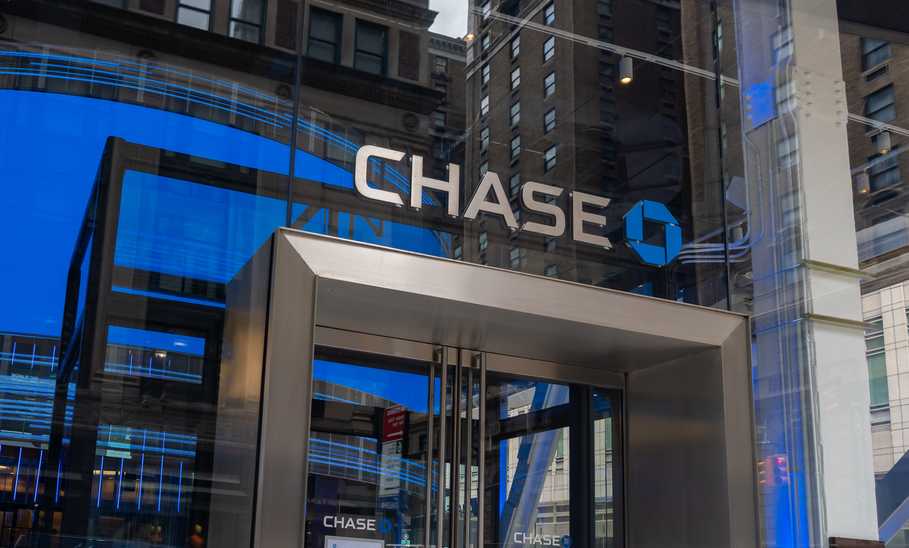Chase Freedom Unlimited vs Sapphire Preferred: Pick or Combine


Our evaluations and opinions are not influenced by our advertising relationships, but we may earn a commission from our partners’ links. This content is created by TIME Stamped, under TIME’s direction and produced in accordance with TIME’s editorial guidelines and overseen by TIME’s editorial staff. Learn more about it.
If you travel often, the card_name is likely on your radar. It is a mid-tier premium rewards card offering rewards of two points per dollar on travel, useful travel insurance protections, and several options for redeeming your reward points for travel at increased values. The card’s annual fee of annual_fees is in-line with other cards aimed at travelers and offering similar benefits.
If you stay closer to home, the card_name card may be the better choice. The card offers 1.5% cash back on all of your purchases, plus 3% rewards on dining and drugstore purchases and a welcome bonus that can give you up to 5% rewards on your grocery store spending.
card_name is a solid flat-rate earnings card with annual_fee_disclaimer annual fee. Although the 1.5% cash back doesn’t seem impressive at first glance, it becomes more valuable when combined with other rewards cards from Chase that can be redeemed for a far greater value.
This card is recommended for everyday use, whether for doctor copays or big box store purchases. It can be a large earner for cardmembers who want to get the most out of their everyday spending.
Introductory Offer:
Intro Card Rewards:
After the First Year or $20,000 Spent Card Rewards:
Additional Benefits:
Member FDIC
Which card might be right for you? If you don’t travel often, choose the Chase Freedom. If you travel frequently, you should consider the card_name. But getting both cards offers an interesting synergistic value proposition: you can take advantage of both cards’ rewards earning structure and redeem all of your points for increased values through the card_name.
In this overview, we’ll highlight both cards, show you the benefits and rewards offered by each and help you decide which card is right for you.
Here’s how the card_name and card_name stack up:
| Feature | card_name | card_name | Winner |
|---|---|---|---|
Welcome Bonus | bonus_miles_full | bonus_miles_full | card_name |
Rewards |
|
| card_name |
Annual Fee | annual_fees | annual_fees | card_name |
APR (or Regular APR) | reg_apr,reg_apr_type, based on creditworthiness |
| card_name |
Foreign Transaction Fee | foreign_transaction_fee | foreign_transaction_fee | card_name |
Other Benefits (or Additional Perks) |
|
| card_name |
The card_name will let you bonus_miles_full. This is the standard welcome bonus for this card, but Chase raises this bonus from time to time. If you’re considering the card_name for its welcome bonus, consider waiting for a promotional welcome bonus to come along. Currently, card_name offers unlimited matched cash back during your first year.
card_name is a solid flat-rate earnings card with annual_fee_disclaimer annual fee. Although the 1.5% cash back doesn’t seem impressive at first glance, it becomes more valuable when combined with other rewards cards from Chase that can be redeemed for a far greater value.
This card is recommended for everyday use, whether for doctor copays or big box store purchases. It can be a large earner for cardmembers who want to get the most out of their everyday spending.
Introductory Offer:
Intro Card Rewards:
After the First Year or $20,000 Spent Card Rewards:
Additional Benefits:
Member FDIC
The card_name currently offers a limited time welcome bonus: bonus_miles_full
Which welcome bonus is best for you will depend on your spending patterns, but the $800 potential value of the Chase Freedom welcome bonus, plus the fact that the card_name sometimes offers a greater bonus means that we give this one to the card_name.
The card_name and card_name both earn Ultimate Rewards, even though the Chase Freedom’s rewards are marketed as cash back. Ultimate Rewards can be combined across cards and redeemed under the account of the most generous card, making for several ways to get additional value out of your points.
The Chase Freedom card does not allow airline transfers or redemptions for increased value. If you hold this card alone, your points will be worth only one cent each.
If you hold the card_name, you can redeem your Ultimate Rewards points for 1.25 cents each when redeeming for travel through Chase Ultimate Rewards, plus you can transfer them to one of Chase’s many transfer partner airlines and hotels for the chance to redeem them for even greater value.
When you hold both cards, the points you earn with your Chase Freedom card become more valuable. If you transfer the Ultimate Rewards you earn with the Freedom card to your Sapphire Preferred account, you can then redeem those points for 1.25 cents each toward travel or transfer them to airline partners. If you are heavily invested in Ultimate Rewards, holding a premium card like the card_name can increase the value of all of the points you earn.
In terms of earning, both cards earn five points per dollar on travel purchased through Chase and three points per dollar spent on dining purchases. The card_name earns two points per dollar on general travel purchases, plus one point per dollar on non-bonused spending. The Freedom gives you three points per dollar you spend at drugstores and 1.5 points per dollar spent on everything else.
On earnings alone, the Chase Freedom might have the edge; for most consumers, two additional points per dollar on drugstore purchases is probably more compelling than an extra half point per dollar on travel spending. But when you count in the ability to redeem for increased reward value, the card_name comes out ahead.
The card_name carries annual_fees annual fee, while the card_name has an annual fee of annual_fees. Of course, with the card_name, you’re getting additional benefits elsewhere, but on annual fee alone, the card_name wins. Be sure you consider the annual fee in the context of the other benefits offered by the card.
If you’re planning on occasionally financing purchases, it’s important to consider a card’s APR. The card_name has an APR range of reg_apr,reg_apr_type, while the card_name's range is reg_apr,reg_apr_type. Exactly which APR you are offered is based on your creditworthiness and varies based on the Prime Rate.
But the Chase Freedom offers one thing that the card_name doesn’t: an introductory intro_apr_rate,intro_apr_duration. The introductory APR applies to both balance transfers and purchases, making the card_name a useful option for consolidating higher-interest credit card debt or financing purchases over a longer term. If you transfer a balance from another card, you’ll pay a balance transfer intro fee of either $5 or 3% of the amount of each transfer, whichever is greater, on transfers made within 60 days of account opening.(then balance_transfer_fees). Just be sure to pay off any balance transfers and purchases before the end of the introductory APR period, when the normal APR will apply.
The card_name is targeted toward frequent travelers and carries no foreign transaction fee. If you take your card_name on your vacation abroad, you’ll pay a foreign_transaction_fee foreign transaction fee each time you swipe the card.
The card_name offers a valuable set of perks if you use the card for travel. Trip cancellation/interruption insurance will cover you if your trip is canceled for a set of covered reasons and primary auto rental collision damage waiver insurance means you won’t make a claim against your personal auto insurance if a car you rent is damaged. If a flight is delayed, trip delay reimbursement can cover your expenses and baggage delay insurance can provide for essential expenses if your baggage doesn’t show up on time.
Both cards offer purchase protection and extended warranty protection. Chase’s extended warranty protection adds an additional year to eligible items you purchase using your card that have warranties up to three years.
The card_name layers additional travel insurance benefits on top of what is offered by the card_name, so it wins for its travel perks.
What you earn with any rewards card will ultimately depend on your spending patterns, but if you travel, you can expect to earn more with the card_name. Both cards earn three points per dollar on dining. And the card_name offers three points per dollar spent at drugstores. Consider your own spending patterns in the context of the card’s bonus categories to get an idea of how much you could earn in rewards.
Here is what each card earns in its spending categories:
| card_name Earns Ultimate Rewards | card_name Earns Ultimate Rewards |
|---|---|
|
|
The card_name is a great card that is a reasonable addition to anyone’s wallet, especially with the current welcome bonus which can get you 5% on $12,000 of grocery store spending. You’ll earn 50% more rewards on your everyday purchases than you will with the card_name, your purchases will be protected by the same extended warranty benefit and the drugstore bonus category is likely to be more useful than the travel category. All of that on a card with annual_fees annual fee makes the card_name card a winning pick.
If you travel more than a few times a year, consider the card_name for its robust travel insurance protections. The card’s annual_fees annual fee buys you a small amount of extra rewards on your travel purchases. But more importantly, you’ll be covered by the trip delay protection, in case your flight is delayed overnight. Once you accumulate a substantial amount of Ultimate Rewards points, the card_name gets more interesting, as you can transfer your points to airline and hotel partners for some great value travel redemptions.
If you think that the card_name is the more rewarding card for you, consider the possibility of picking up both the card_name and the card_name. Having both cards in your wallet means you can combine the best point earning possibilities of both cards with the increased value offered by point redemptions through the card_name.
The card_name offers a great option if you want a annual_fees annual-fee credit card that offers rewards on everyday purchases. With its current welcome bonus, it provides the additional utility of being one of the best cards for grocery store spending. However, if you travel a few times a year, the additional travel insurance protections and rewards on travel spending offered by the card_name make that card worth its annual_fees annual fee.
Yes, the card_name earns Ultimate Rewards points, even though it is marketed as earning cash back. Your Ultimate Rewards points can be combined with the rewards from other Ultimate Rewards-earning cards you hold.
Yes. Chase allows you to have both the card_name and card_name cards. You can not, however, hold more than one Sapphire card. So you couldn’t, for example, have both a card_name and Chase Sapphire Reserve.
Chase sometimes offers the option to downgrade your card_name or Sapphire Reserve card to a no-annual-fee card. Often, the card_name and Chase Freedom Flex are offered as downgrade options.
The information presented here is created by TIME Stamped and overseen by TIME editorial staff. To learn more, see our About Us page.



